Your business is losing money.
We don’t have to know who you are or what your business does to know that you’re leaving revenue on the table due to cart abandonment.
In fact, nearly 67% of desktop shopping carts are abandoned—and that number is closer to 86% on mobile.
So for every hundred people who add your products to a cart, the best case scenario is that only 33 of them convert into paying customers.
Shopping cart abandonment happens when a customer begins the process of buying your product or service but exits part of the way through.
There are a number of reasons this can happen, including surprise fees or shipping costs, bad user experience with the website or a lack of payment options.
A customer might just have a change of heart after browsing and comparing prices elsewhere.
Some of these reasons can be remedied, and others can’t.
However, it’s critical to understand the effects shopping cart abandonment can have on your business and the importance of doing what you can to mitigate it.
In this article, we’ll list five of the most significant problems shopping cart abandonment can cause for your business.
- Losing Customer Lifetime Value
- Higher Customer Acquisition Costs
- Inventory Management Issues
- Website Speed Issues
- Lower Ad Click-Through Rates
- Is Shopping Cart Abandonment Hurting Your Business?
Losing Customer Lifetime Value
It’s all too easy to focus on the short-term and avoid thinking about the long-term effects that your current business practices can have on your future growth.
Perhaps you think your revenue is solid and shopping cart abandonment isn’t such a big deal for your business.
After all, it’s impossible to reduce shopping cart abandonment completely, so why worry about it?
While it’s true that you can’t eliminate shopping cart abandonment completely, doing nothing to mitigate the effects of shopping cart abandonment can have major consequences for your business over time.
Think about the potential customer who starts the purchase process and then abandons their cart.
This customer most likely had enough interest in your product to visit your website and make it this far. But something causes them to give up before following through.
Not only have you lost a sale, but you may have lost a repeat customer.
If you lose that customer for good, you’ll miss out on all their future potential business as well as other customers they may refer to you.
And it’s likely that you have a lot more than one customer with an abandoned cart.
If you add all that up, it could amount to a big chunk of potential revenue you are missing out on—and this potential revenue is called customer lifetime value.
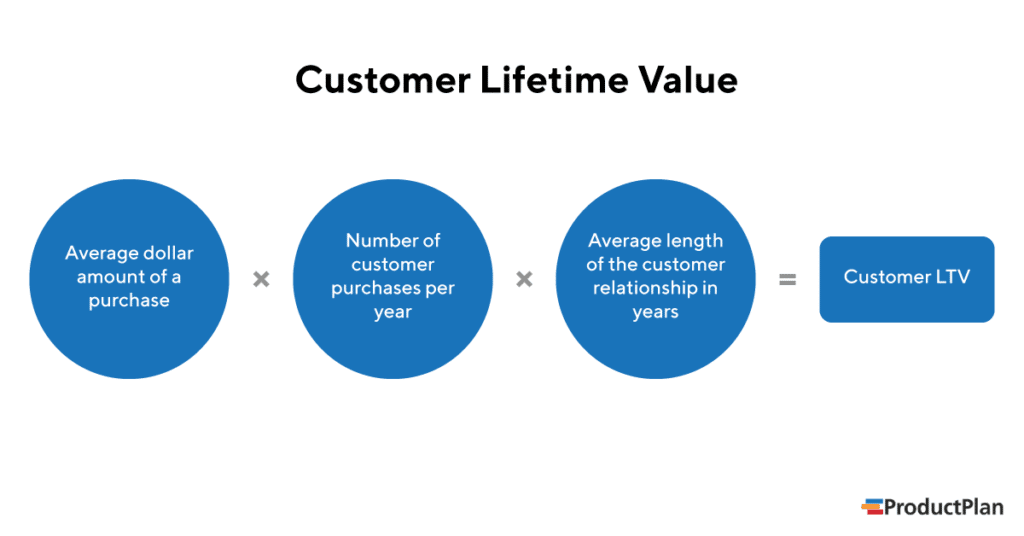
Source: Product Plan
The customer lifetime value (LTV) is an important data metric that indicates how well your business is doing.
As the Product Plan blog puts it:
“Also called customer lifetime value (CLV, or CLTV), this is a critical metric for a company trying to gauge the cost efficiency of acquiring new customers and supporting them over time.”
To calculate customer LTV, multiply the average dollar amount of a purchase, the number of annual customer purchases, and the average length of a customer relationship.
It’s easy to see that if you can do something to prevent shopping cart abandonment at the front end in order to hold on to these customers, it could make a big difference in your future profits.
There’s no reason to let these customers walk away if you can do something to keep them.
Higher Customer Acquisition Costs
As you probably know, it costs five times less to keep a current customer than to onboard a new one. Therefore, it’s in your best interest to strive for the highest customer retention rate possible.
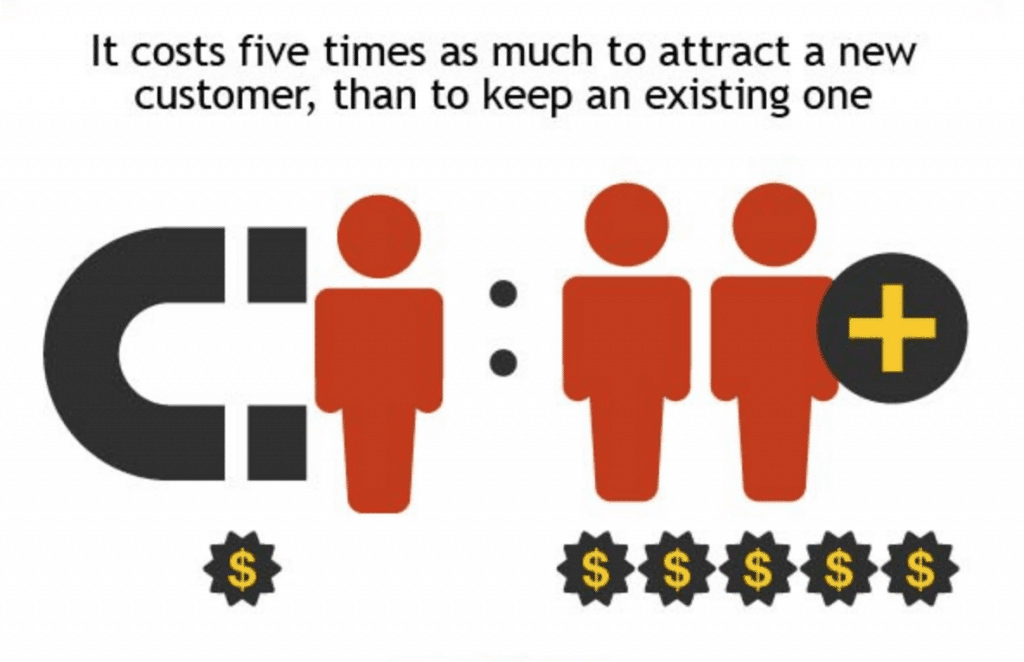
Source: Prisync
In the case of shopping cart abandonment, there are strategies to encourage the customer to reclaim the cart, such as offering a discount to encourage closing the sale or emailing the customer to remind them about the abandoned cart.
There’s some merit in using such strategies to reclaim abandoned shopping carts.
However, it will save you more money to try to prevent shopping cart abandonment from happening in the first place.
Think about it: you’ve already spent ad money to attract these customers.
If the customer leaves before completing the purchase, you can come up with a strategy to entice them to return, but it will cost more money and time.
This will increase your overall customer acquisition costs.
Retargeting these customers can be very expensive, and it adds to the ad money you’ve already spent.
It’s much more cost-effective to do what you can to reduce shopping cart abandonment on the front end.
The best approach is to make sure your website is as simple and easy to use as possible for your customers.
You can maximize customer satisfaction with your eCommerce platform by:
- Making sure your online purchase process is as simple and streamlined as possible
- Supporting multiple payment options
- Showing your payment options upfront
- Avoiding surprise fees and shipping costs
- Supporting a wishlist feature so that customers can save items for later if they’re not yet ready to make a purchase
You’re unlikely to ever get shopping cart abandonment down to zero, and there’s nothing wrong with using common strategies to reclaim the cart or retarget these customers.
But it’s much less expensive to prevent cart abandonment from happening in the first place, so that should be your priority.
Inventory Management Issues
Another reason to focus on preventing shopping cart abandonment is that it can wreak havoc with your inventory management practices.
First of all, having your items in abandoned carts will limit their availability and visibility to other customers shopping online.
Customers who may be interested in purchasing those items can’t access them because they’re stuck in abandoned carts.
This can especially be a problem if you have limited stock. It may look like you’re out of stock on certain items, when in reality they’re still available.
Customers may decide to take their search elsewhere.
The same holds true if your business sells something like attendance or participation in a time-sensitive event.
If there are slots tied up in abandoned carts, customers won’t be able to purchase them.
And since these reservations are only available for a certain amount of time, you could lose out on these sales entirely.
Items left in abandoned shopping carts can result in skewed data about things like:
- Your available stock
- Which items are in high demand
- Which advertising campaigns have been successful
If you’re making decisions based on this data without taking the effect of abandoned shopping carts into account, you might end up with a bad strategy.
Items placed in carts are not the same as items purchased.
If you’re looking for a tool that can aid businesses in this context, look no further than Regpack.
Our tool lets you add expiration and availability dates to your products, which come in handy when you sell limited products or tickets to time-sensitive events.
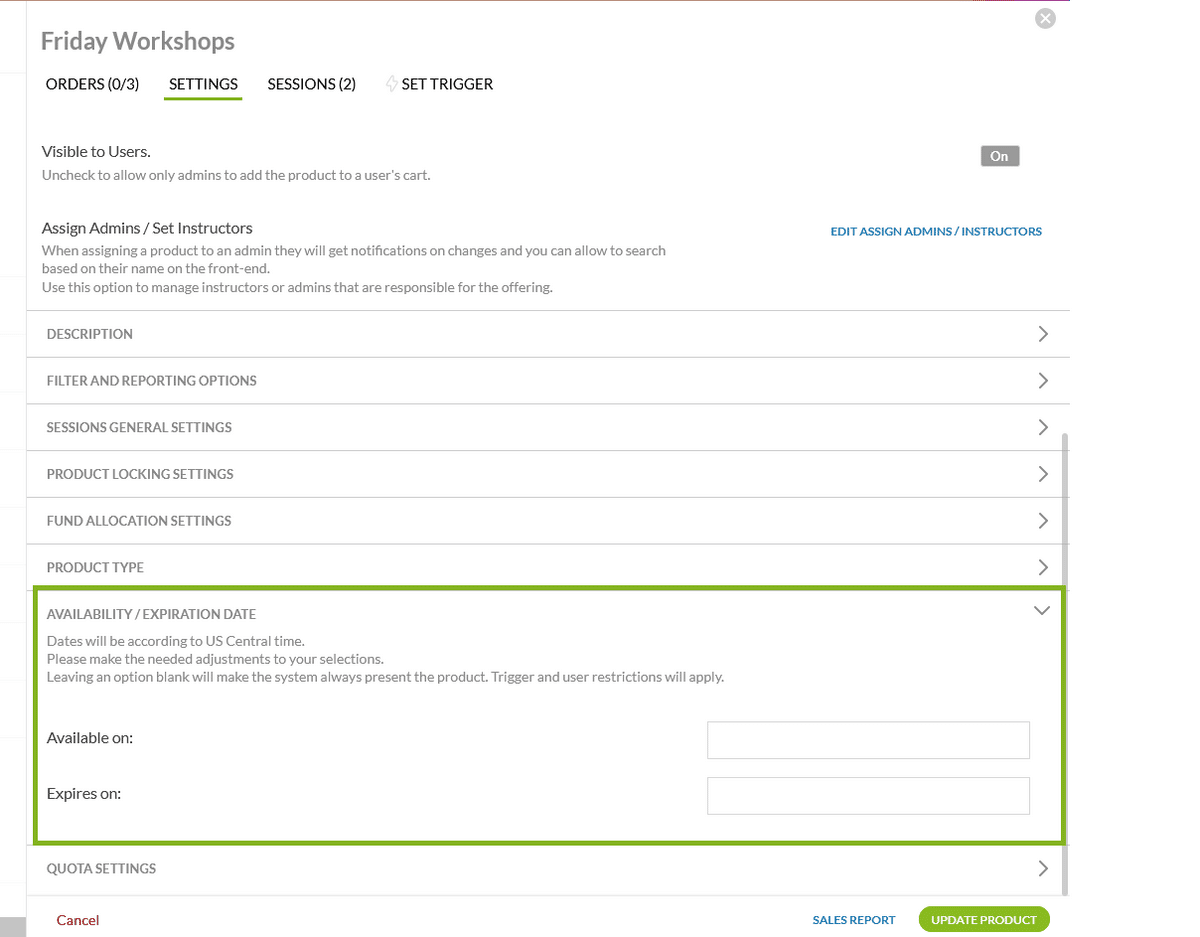
Source: Regpack
With Regpack, you can easily hide products before and after they should be appearing.
Regpack also comes with a cart timer that lets you limit the amount of time users can keep products in their cart before checking out.
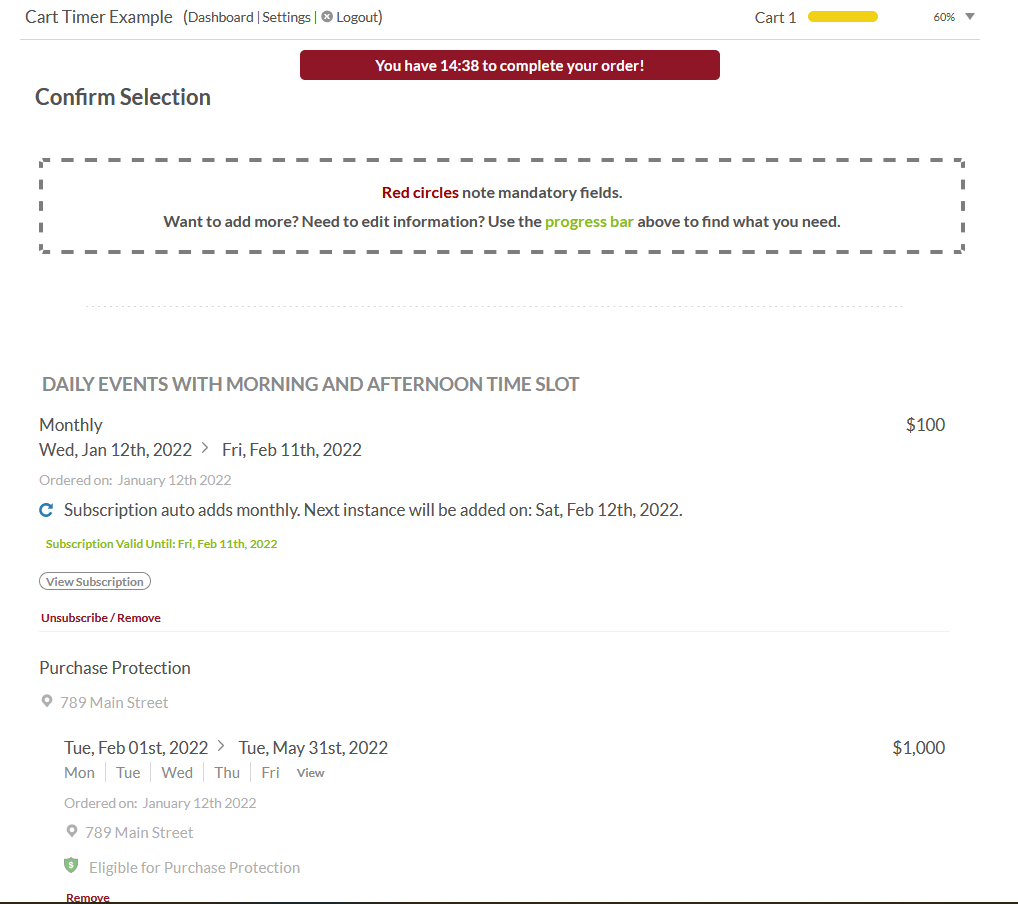
Source: Regpack
You can choose to trigger one of a few automatic actions once the allotted time has gone by without action from the user:
- Abandoned cart (Recommended)—The product stays in the user’s cart, but it is no longer calculated as part of your quota. So if you filter for this product, this user won’t be on the list of those who have ordered it.
- Move items to waitlist—The item will be moved to a waitlist, where the user can re-add it to their cart if and when they decide to move forward with the purchase.
- Remove items from cart—This option is the bluntest and most straightforward. You can choose to let items completely disappear from the user’s cart if they haven’t completed the checkout process in time.
With Regpack’s cart timer tool, you also have granular control over when to stop the timer.
For instance, you can choose to let the timer stop after the user makes a payment, either in part or in full, toward the product in question.
You can also set the cart timer for specific products rather than your entire catalog.
Website Speed Issues
Another potential pitfall of abandoned carts is the effect they can have on your website speed. And in the e-commerce space, website speed is vital to maintaining good sales.
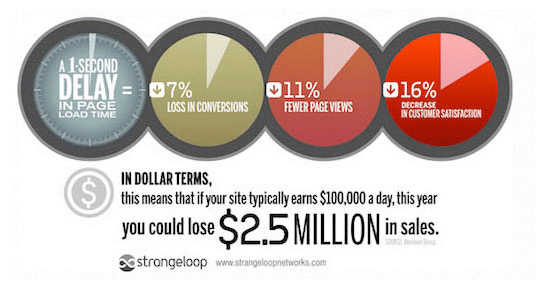
Image source: Louder.Online
In fact, a one-second delay in page load time can lead to as much as a 7% loss in customer conversions.
This staggering statistic means that even a fractionally slower site can lead to significantly lower revenue.
And that’s not all; a slower site can also have a snowball effect on your overall online presence. As the WPBeginner blog points out:
“Google’s page experience search update is solely focused on user experience metrics like bounce rate and website speed. A faster eCommerce website will help you bring more free traffic from search engines.”
A high number of abandoned carts can take up server bandwidth and significantly slow down your website, which is a major problem for your customer experience.
A slow website can be incredibly frustrating to customers, causing them to give up or do their shopping elsewhere.
Worse still, this slowdown could cause other customers trying to make a purchase get frustrated and navigate away, leaving more carts abandoned and exacerbating the problem.
You’re especially susceptible to this possibility during high sales times like Black Friday when your site may already be experiencing heavy traffic.
In order to have a robust and functional website, it’s crucial to think about the effect high shopping cart abandonment can have on your site.
Be sure to take precautions like blocking bots that slow down your site, using a hosting plan that can handle heavy traffic, and using strategies to reduce cart abandonment on the front end.
Lower Ad Click-Through Rates
Shopping cart abandonment can also have unintentional effects on your advertising strategy.
If you use website analytics and click-through rates to keep track of the effectiveness of your advertisements, it’s important to keep in mind the effect shopping cart abandonment can have.
Because of the potential for items being left in carts, the number of clicks does not equal the number of purchases on your website.
A customer placing an item in a cart and then abandoning the purchase is often considered by ad bots as engagement with that product, which is factored into what ads are shown to other potential customers.
However, this could skew your click-through rates, obscuring the fact that other products may be selling better than ones abandoned in carts.
As a result, your website analytics may be skewed, showing certain ads or products as more popular than they actually are.
New or potential customers can then be targeted with ads that may actually not be as effective as others.
You could be losing out on potential sales and growth with less-than-optimal ad campaigns.
This is yet another reason to mitigate shopping cart abandonment as much as possible.
The more your ad campaigns are driven by completed purchases and not just clicks, the more accurate and effective your ads will be.
Do what you can to ensure that the right ads are shown to the right customers.
Is Shopping Cart Abandonment Hurting Your Business?
Abandoned shopping carts are inevitable in today’s ecommerce world.
Whether users like to add items to their cart as a kind of “window shopping” or they simply get distracted before they can finish the checkout process, it’s unavoidable that you’ll have to deal with some shopping cart abandonment in your business.
And with the e-commerce space becoming ever more competitive and customers getting savvier about online shopping, this problem isn’t going away anytime soon.
No matter how large or small your company is, customers abandoning their shopping carts before checking out can have a massive impact on your bottom line.
That’s why to maximize your earning potential, you need to do whatever you can to minimize shopping cart abandonment.


















